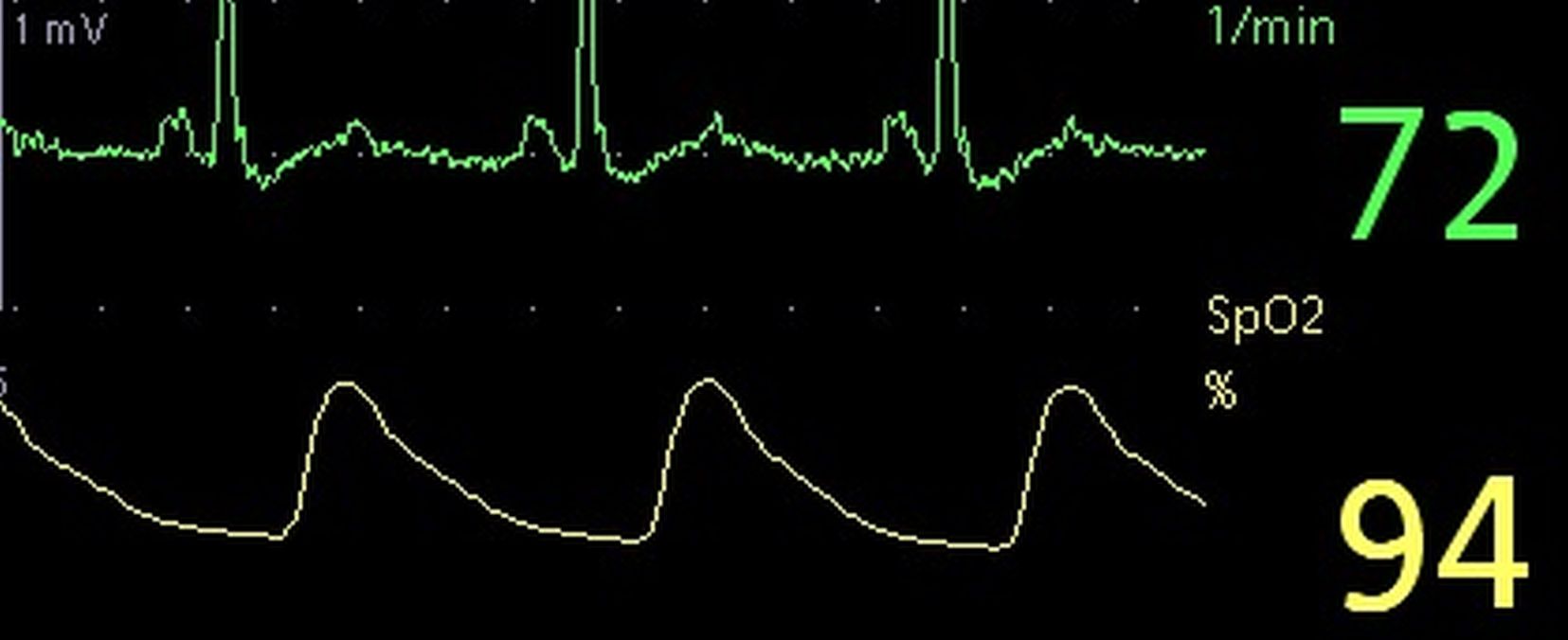Pulse oximetry (SpO2) tracing
Pulse oximetry (SpO2) tracing
 Pulse oximetry (SpO2) tracing: It is common to monitor the pulse oximetry tracing in all emergency departments, intensive care units and operation theaters now-a-days. It gives an instantaneous measure of the oxygen saturation and guides management. Early detection of a fall in oxygen saturation often helps in preventive measures which often avert a crash in the hemodynamic status. The plethysmograph is obtained usually by keeping the sensor on the index finger and connecting it to the bedside monitor. In the tracing shown above, the oxygen saturation is displayed as 94% and the heart rate as 72/minute. A good tracing indicates intact blood flow to the finger. Tracing can be poor in case of a cold extremity which may sometimes need warming to display a good tracing. The simultaneous ECG is shown as a green tracing here and documents normal sinus rhythm. 1 mV shown at the top left corner is the standardization of the ECG amplitude.
Pulse oximetry (SpO2) tracing: It is common to monitor the pulse oximetry tracing in all emergency departments, intensive care units and operation theaters now-a-days. It gives an instantaneous measure of the oxygen saturation and guides management. Early detection of a fall in oxygen saturation often helps in preventive measures which often avert a crash in the hemodynamic status. The plethysmograph is obtained usually by keeping the sensor on the index finger and connecting it to the bedside monitor. In the tracing shown above, the oxygen saturation is displayed as 94% and the heart rate as 72/minute. A good tracing indicates intact blood flow to the finger. Tracing can be poor in case of a cold extremity which may sometimes need warming to display a good tracing. The simultaneous ECG is shown as a green tracing here and documents normal sinus rhythm. 1 mV shown at the top left corner is the standardization of the ECG amplitude.
Other than pulse oximeters attached to bedside monitors, small pulse oximeters are are available, which can be attached to the finger and the person can walk about. This is useful in monitoring the response of pulse rate and oxygen saturation to exercise.
Multiwavelength pulse oximeters can detect dyshemoglobins [1].
Reference
- Amal Jubran. Pulse Oximetry. Crit Care. 2015 Jul 16;19(1):272.
